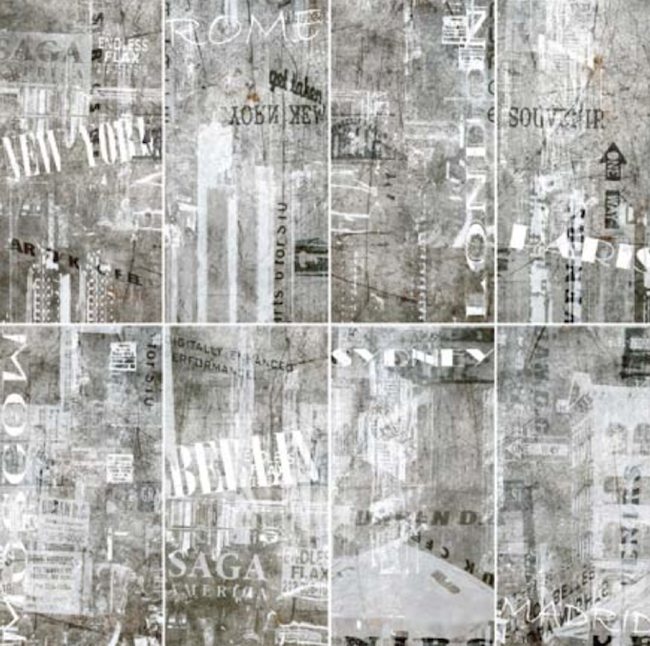Daniel van Dijck’s line of marble plates and bowls embody a sense of history. They appear weathered and worn like well-used heirlooms. Part of this perceived history is due to the off kilter form and marbled surface, alluding to a time prior to industrial production. In this way Dijck manages to readdress the ubiquitous presence of plates and bowls.

Daniel van Dijck, Marble Plate, 2015.

Daniel van Dijck, Marble Bowl, 2015.
Sharan Elran has used modular forms throughout his work to articulate concepts of infinity and human possibility. See a previous article on his Unlimited Edition, 1 of 6,227,020,800 here. In Bricks #4 Elran employs a similar modular aesthetic creating various iterations of vessels.

Sharan Elran, Bricks #4.

Sharan Elran, Bricks #4.
Refin Ceramiche specializes in the production of ceramic tiles. To create their Graffiti line, designers studied urban environments seeking to translate the look and feel of concrete into porcelain tiles. Available in a variety of sizes, colors, and surface decor, the Graffiti line is suitable for flooring and wall pieces.

Refin Ceramiche, Graffiti.

Refin Ceramiche, Graffiti.

Refin Ceramiche, Graffiti.
Monika Patuszyñska’s porcelain vessels serve as a meeting ground for rich organic texture and clean, refined surface. Honeycomb and sponge-like textures stand in contrast to smooth white walls. The work below was recently shown at the Kielce Institute of Design where Patuszyñska serves as the artistic director.

Monika Patuszyñska.

Vases by Monika Patuszyñska.
Japanese designer Takeshi Omura has spent years developing a signature aesthetic for his utilitarian ware. The result is a mature body of work that is visually light and aged like metal. Magdalena Dymańska, based in Poland, created the rich monochrome still lifes of his work below.
Do you love or loathe these examples of contemporary ceramics? Let us know in the comments.

Takeshi Omura, Mug Cup. Courtesy of Analogue Life.

Magdalena Dymańska, Illustration of Takeshi Omura Ceramics.

Magdalena Dymańska, Illustration of Takeshi Omura Ceramics.

Add your valued opinion to this post.